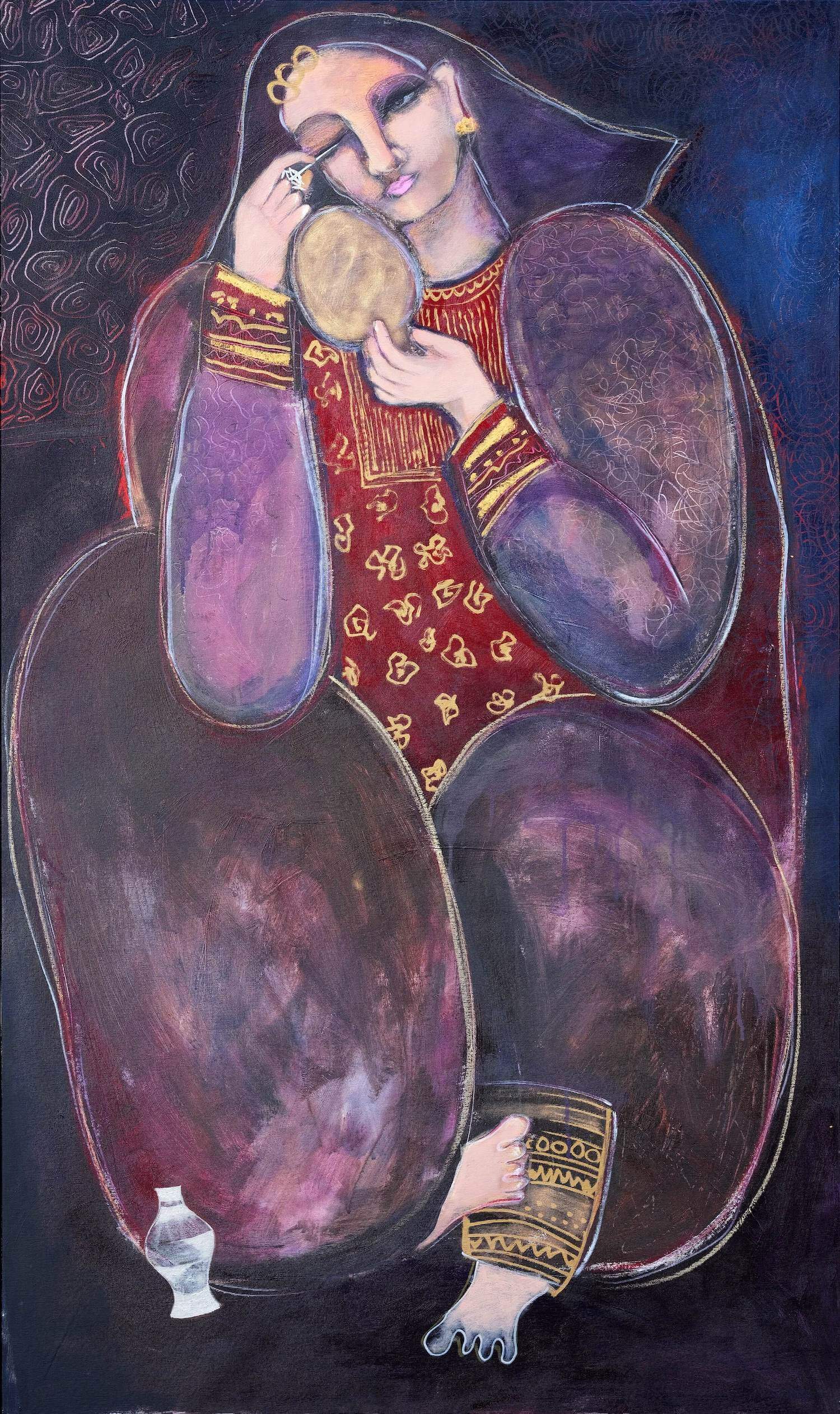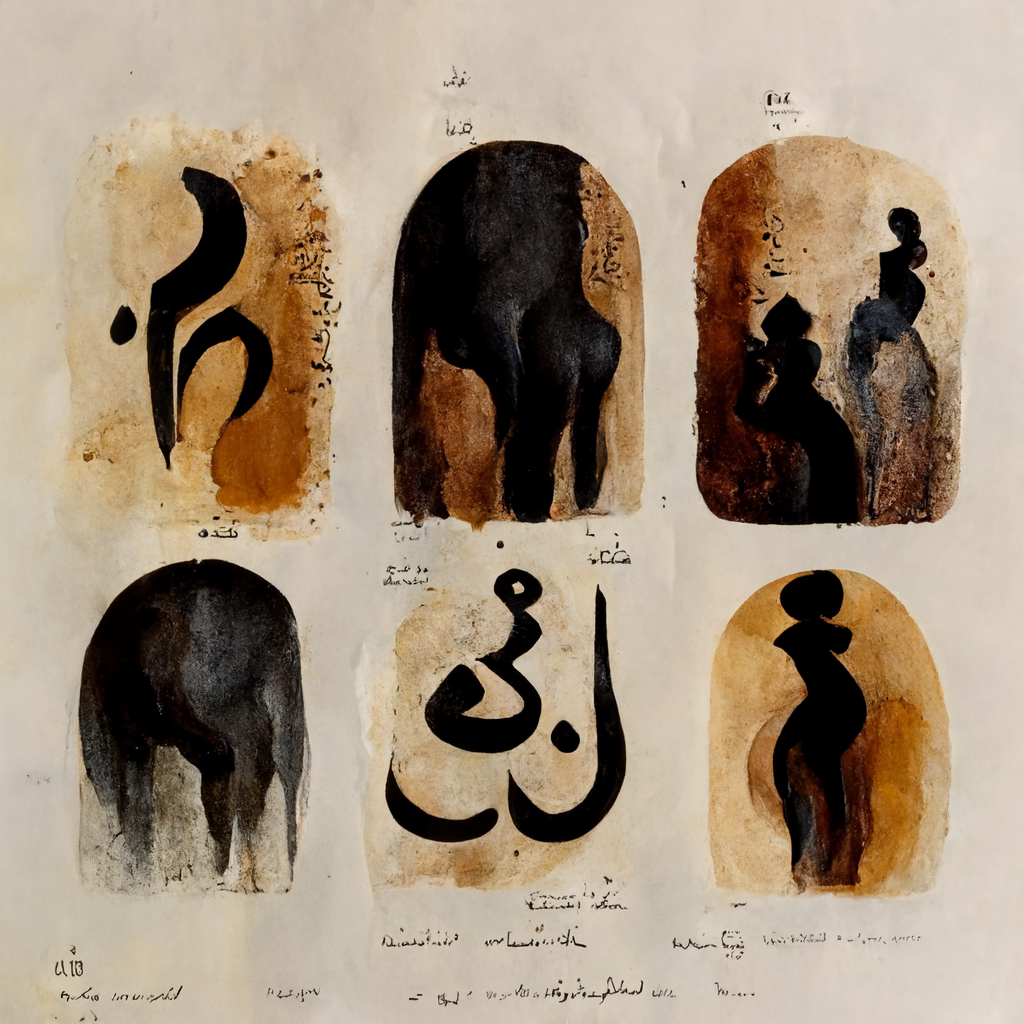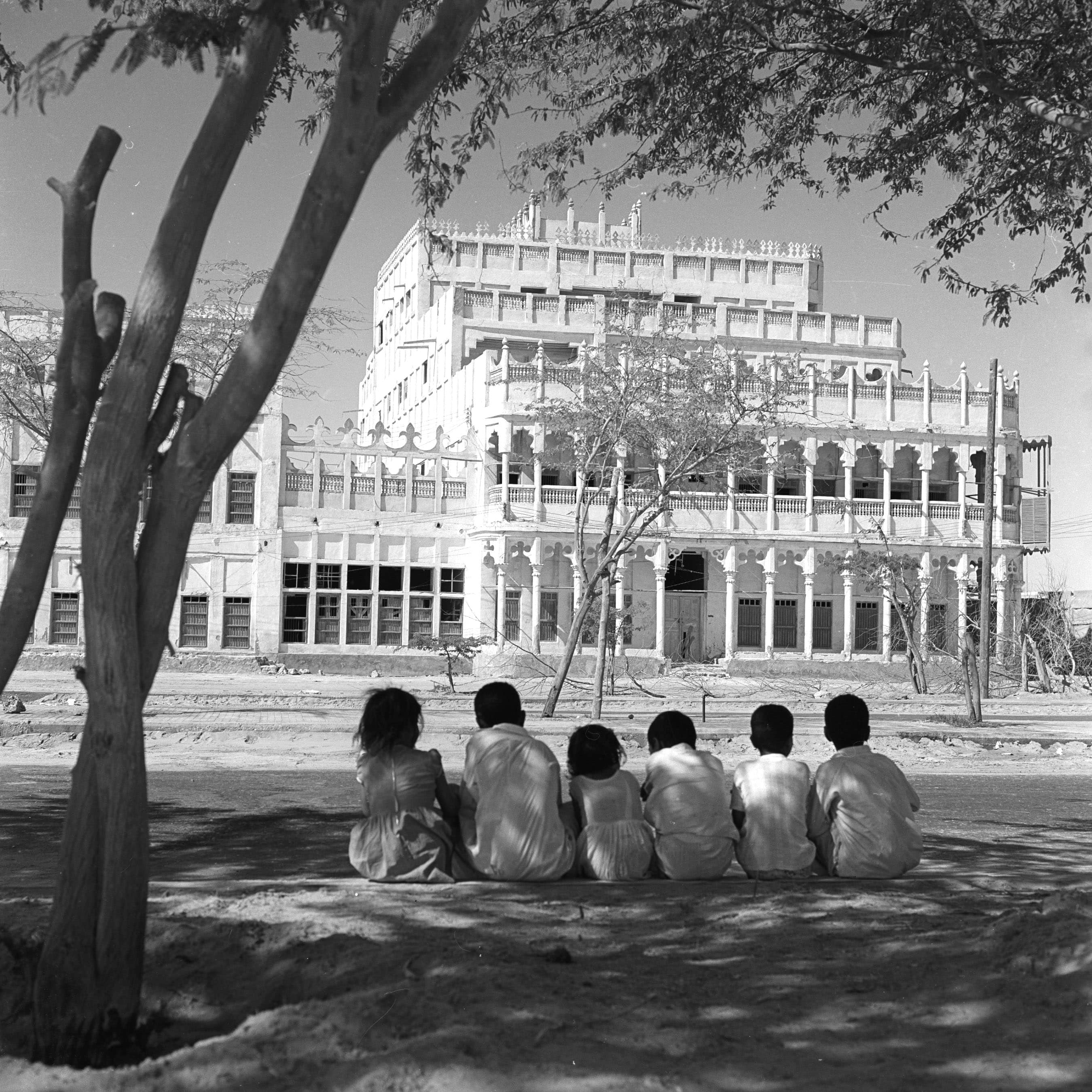Identity through the lens
Embroidery, Taif City, photographed by Dhafer Al Shehri.
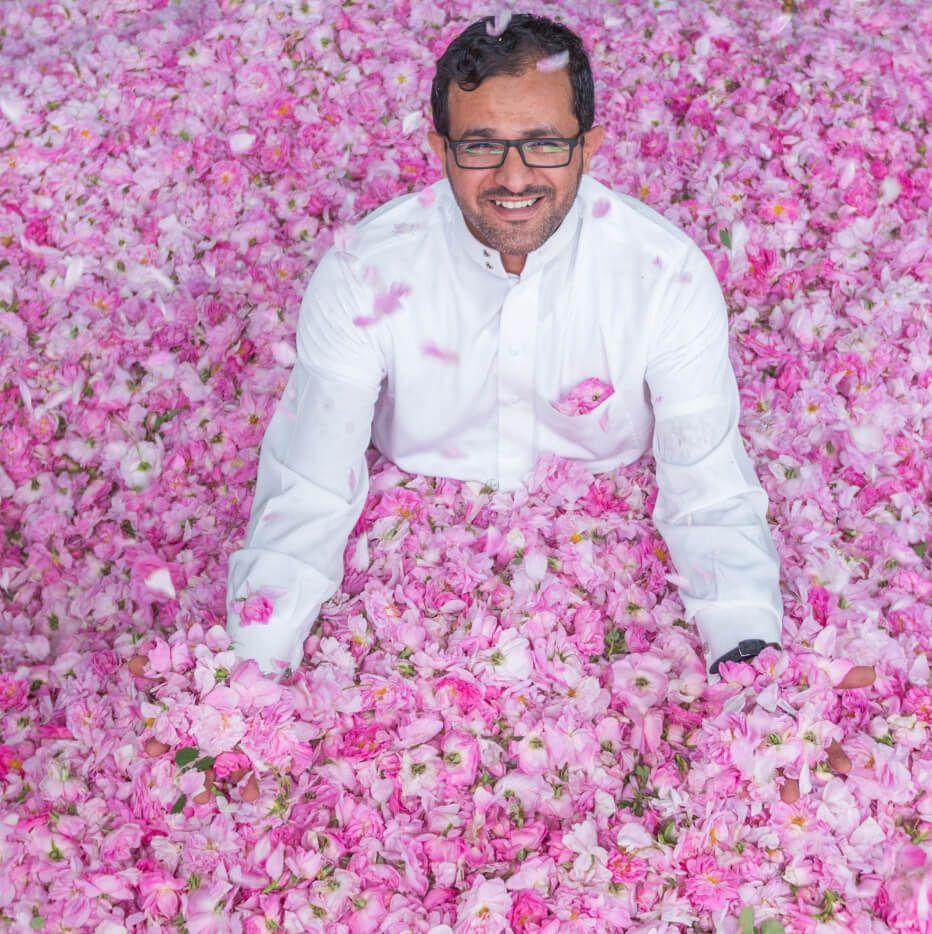
Photographer Dhafer Al-Shehri.
Photographer Dhafer Al-Shehri is known for his pictures that capture the simple moments of life of people and society in various regions of the Kingdom, and which reveal the beauty and diversity of Saudi culture.
He is also known by his ability to document the Kingdom's tourist attractions from angles that have not been seen before, which became part of the design of the new Saudi passport.
Fascinated by the world of photography, Dhafer Al Shehri technically began his journey in the world of photography in the beginning of 2008, but his passion was kindled two years earlier, as he devoted many hours of his day to intensively studying this hobby, before finally deciding to acquire his first camera.
He started photographing and experimenting with the urge to constantly learn. Commenting on his beginnings, he told Ithraeyat Magazine: "When I entered the world of photography, I never thought of becoming a professional photographer or earning money from photography and making it my main source of livelihood." In the same year in which he started photographing, he took the gold medal as his first international award in the Sheikh Saud Al Thani competition in Qatar.
Al Shehri considers street photography to be his preferred method from the beginning, as he says: “Photographing community or street life allows you to sit with people in villages, talk and see their lives closely, and this is what attracts me the most in this genre of photography."
He added, "Street life allowed me to get to know more about the people, the culture and the tourist places. This style allows you to see the shepherd, the mountain and the person playing the flute on top of the mountain."
Al Shehri's photographs revolve around cultural and tourism topics, which in total focus on these two aspects. With regard to culture, he says: "Culture does not end, and it is an important, continuous and renewable part as long as man exists and remains."

To glory and supremacy, the winning photograph of the 2019 Media Excellence Award. Photographed by Dhafer Al Shehri.
Three photographs taken by Al Shehri of the most important landmarks of the Kingdom decorate the pages of the new Saudi passport as they reflect the identity and history of the Kingdom. His photographs were selected alongside other photographers such as Imad Al Husseini and Abdul Aziz Al Dakhil. Photographs were also selected from the Aramco archives for Well No. 7 .
Al Shehri expressed his happiness, saying: "I was very happy to work on this project, which started in 2018, and because my work is one of the works selected in the Saudi passport that every citizen carries. The idea of the project was to add photographs in the passport of heritage and industrial sites in Saudi Arabia. Three photographs I took were chosen for several areas, including the Red Sea, Neom and Mount Tuwaiq.”
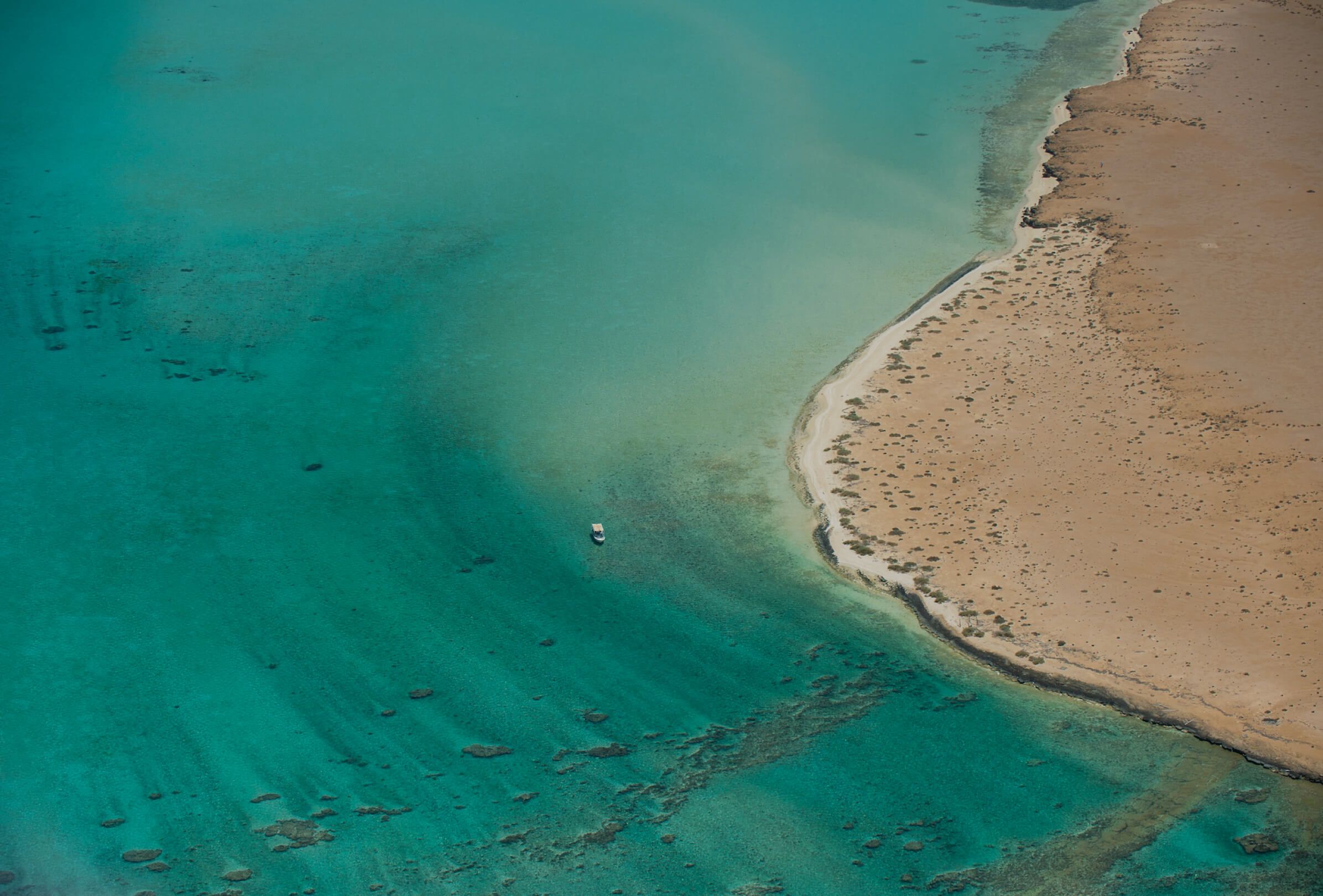
Neom, Saudi Arabia, Photographed by Dhafer Al Shehri.
The lens is one of the most important tools that mankind has used to express their distinctive identity, so the role of the photographer is of great importance in documenting the features of civilization and national culture that reflect the beauty of identity.
When Al Shehri was asked about the role of the photographer in preserving identity, he replied: “It is the duty of every photographer to document and preserve his identity and the identity of his country, by photographing the urban and historical areas and the indigenous people of these areas, who are originally the main reason for preserving the true identity of the area."
On the issue of identity, he added: "It is important that we talk more about the issue of identity, because we unconsciously neglected our identity at a time in the past, and this caused a lot of it to be lost. Now, with a better awareness, we realize the importance of preserving it, and today, the main factor for economic income in many countries is only their preservation of heritage.”

Hand of the Custodian of the Two Holy Mosques, at the Riyadh Summit, 2017. Photographed by Dhafer Al Shehri.
Al Shehri tells us that every photograph he took has a story behind it and a long struggle. He describes his photography trips, which sometimes take a month of traveling, saying: “Photography trips become more like the play you attend and you do not know the acts in it. Sometimes you plan to photograph a subject that is more than 10 km from your house, but you will be surprised that you may find the photograph you like close to your door”.
Al Shehri describes the photographs he takes as: “the building block with which a person builds his palace or house.” Each photograph he took is part of a painting that the photographer has drawn over the years, reflecting his perspective on life.
Al Shehri believes that it is difficult to prefer one photograph over the other: “Some photographs spread widely and become close to the heart because I see them constantly, and some other photographs have a specific subject and are the result of a challenge where I have done the impossible to reach the desired photographs.”
The photograph of the hand of the Custodian of the Two Holy Mosques, King Salman bin Abdulaziz, was one of the most popular photographs that people liked in his social media. He had taken it in 2017 at the Riyadh Summit, when the king received then US President Donald Trump.
When the photographer was asked about the story of his famous picture of camels with the planes of the Saudi Falcons, he replied: “These photographs were a change in my life, and they represent how we can combine our preservation of heritage while at the same time living the latest achievements of the world in development and industry, without compromising our identity and principles. It is one of the photographs that I struggled to capture, I waited for more than three days, I frequently visited the same place, waiting for the same situation, and here every second mattered for an integrated composition of the photograph, and thank God this photograph won the Golden Prize in Austria”.
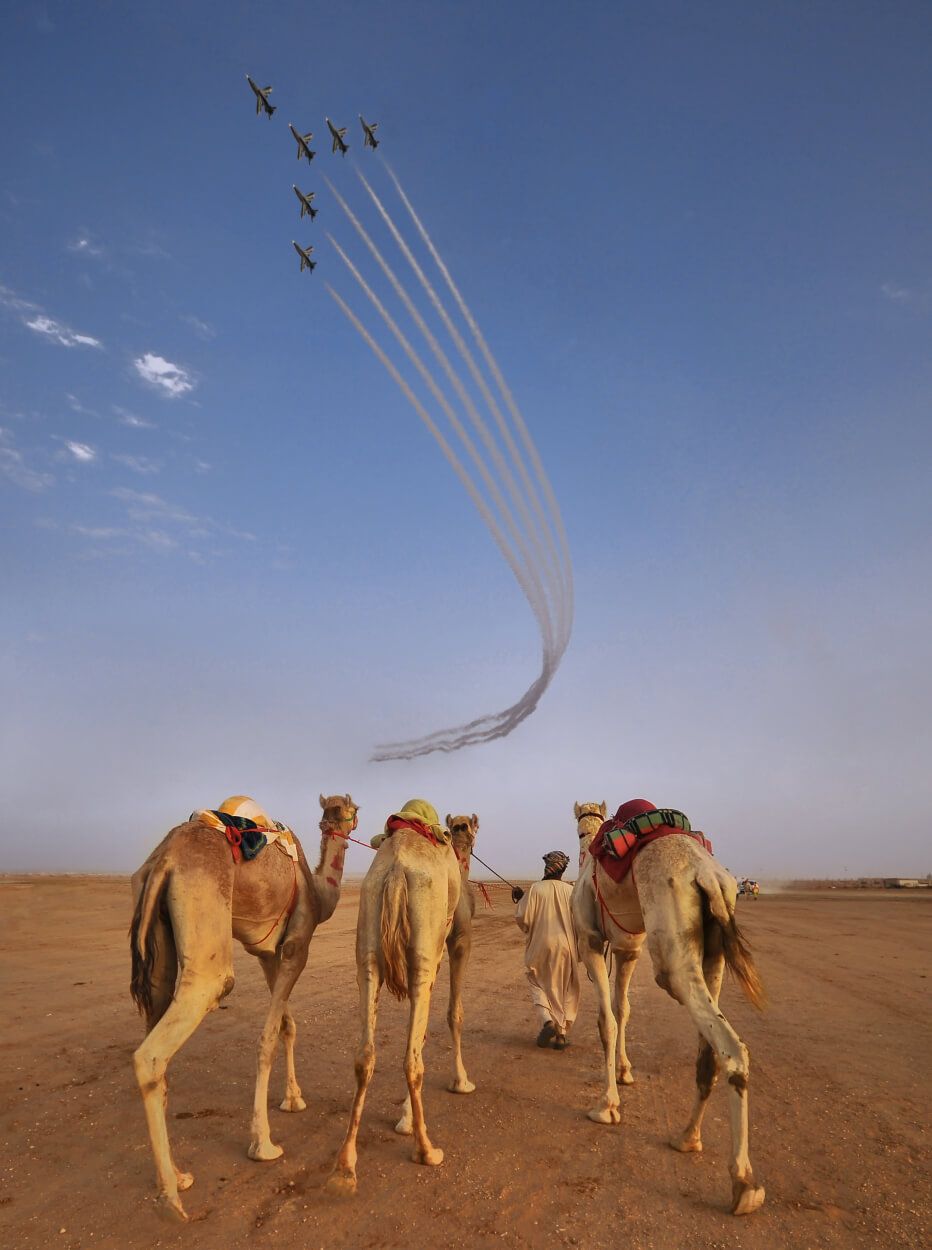
Photographed by Dhafer Al Shehri.
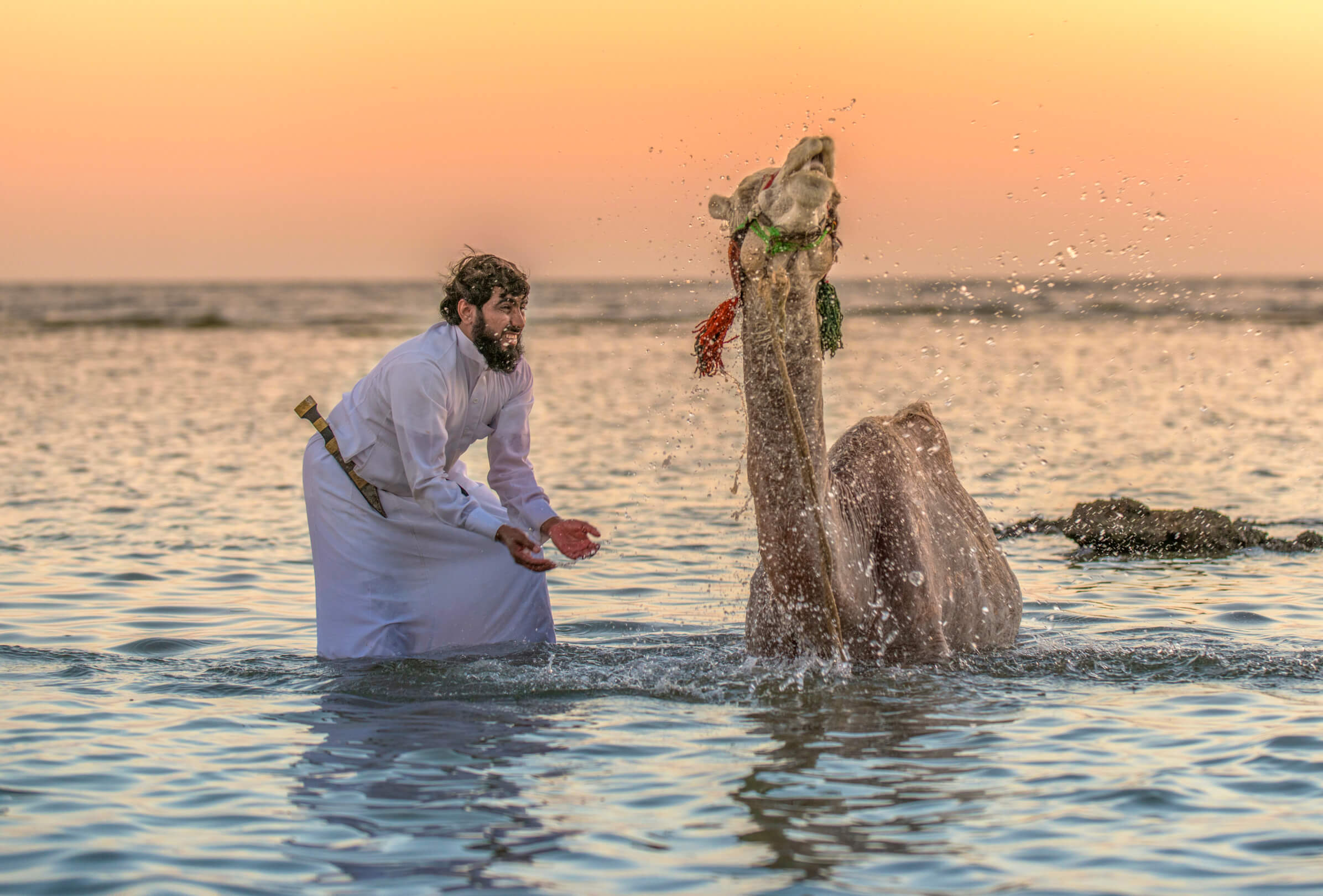
Al Wajh City Festival, 2014, photographed by Dhafer Al Shehri.
Al Shehri also described the story of taking the photograph of the camel with its owner, as it was one of the most beautiful photographs he took purely by chance: “This photograph was for a festival in 2014 in the city of Al Wajh. At that time, I was on a photography tour around the Kingdom in different regions. I saw an advertisement that attracted me very much about holding a boat race in the city of Al Wajh. I understood from the advertisement that the race was for world speedboats. After that I headed to Tabuk, then to the city of Al Wajh, crossing 1300 kilometers approximately. When I arrived there, I was surprised that the race was for normal fishing boats, not as I expected, which was a big shock to me. But I believed there was a photograph to be taken somewhere.
When the festival ended at sunset, there was a caravan of camels whose owners decided to take them into the sea because they wanted to wash the paint off their faces, but they did not realize that by their behavior, they gave me the opportunity to take a photograph that was worth the long distance I traveled to reach this festival. This photograph is still constantly circulating to this day, which brings us back to the same idea; every photography trip is like the play you attend and you do not know the acts in it.”

A group of photographs by Dhafer Al-Shehri.
Al Shehri believes that experience and simulation are one of the most important secrets of development in the field of photography. He says: "I advise the amateur photographer to experiment and simulate the photographs that he likes, whether they are a photograph of a landscape or a photograph of a person, and simulation is not in the sense of imitation or reproduction, because it is one of the stages of education through which it is studied how the photographer reaches the ideal composition of the photograph, a person should also learn ways to process photographs, as photography does not depend only on the camera, but there are other elements such as the right time and place to get the best results.”

A group of photographs by Dhafer Al-Shehri.
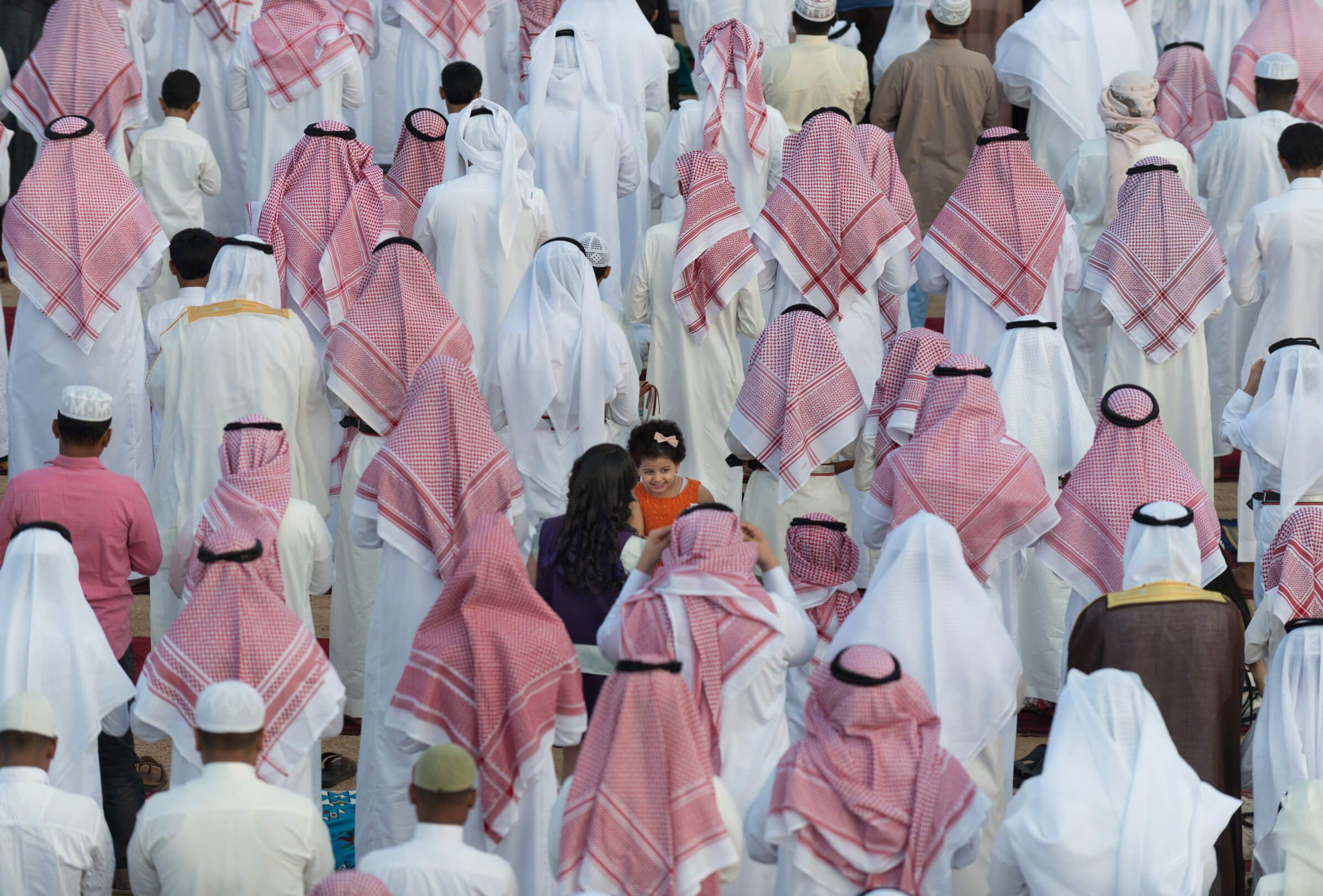
A group of photographs by Dhafer Al-Shehri.
